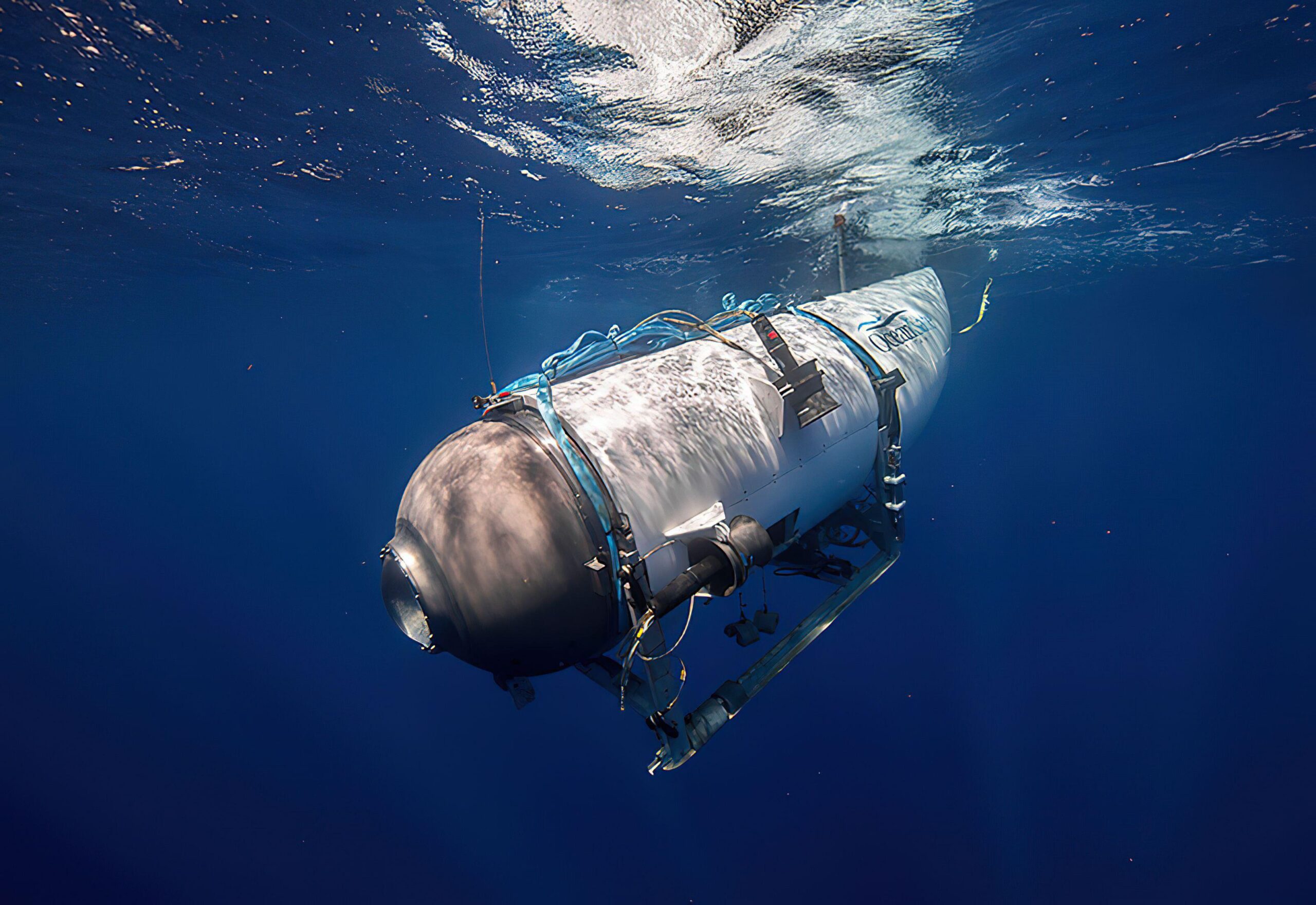
Credit: Alamy
When Will The Titanic Tourist Submarine Run Out Of Air?
The approximate time that the missing Titanic tourist submarine will run out of air has been confirmed.
Five passengers were onboard the small submarine – named Titan – that was taking an excursion to the remains of the famous ship which sank in 1912.
Roughly one hour and 45 minutes into its journey, the US Coast Guard announced that they had lost all contact with the submarine and did not know its whereabouts.
It is believed to be lost somewhere in the Atlantic Ocean.
An international search for the vessel is taking place, but they are in a race against time as the Titan’s supply of oxygen is running low.
Watch as a journalist who has been on the now-missing submarine for a Titanic expedition explains what it’s like below…
According to Sky News, the vessel’s air supply is expected to run out at 12:08pm UK time (7:08am EST) on Thursday, June 22.
The Titan is believed to have had 96 hours of oxygen onboard when it began its dive on Sunday.
However, the lack of air isn’t the only danger that the five passengers onboard – which include British billionaire Hamish Harding – are now facing.
Speaking to the BBC, Dr Ken LeDez, a hyperbaric medicine expert at Memorial University in St John’s, Newfoundland, says that a number of factors – including a person’s metabolism – now come into play when predicting how long they can survive.
Related Article: Haunting Final Text Of British Billionaire Trapped Inside Missing Titanic Sub
Related Article: ‘Claustrophobic’ Photos Show How Small Submarine Is That Went Missing During Titanic Tour
He explains: “It’s not like switching off a light, it’s like climbing a mountain – as the temperature gets colder and metabolism falls [it depends] how fast you ascend that mountain.
“They’re going to do everything they can to reduce their oxygen consumption, they’re going to rest, they’re going to try to be as relaxed and calm as possible.”
Dr LeDez also adds that ‘hypothermia could be their friend’.
“There is a possibility if they cool down enough and lose consciousness they could live through it – rescuers know this,” he tells the outlet.
Another factor that could have an impact is the rise of carbon dioxide levels – which when built up becomes ‘like an anaesthetic gas’ and will send those onboard to sleep.
There are also fears that the submarine could have possibly imploded at 10,000 ft underwater – as at those depths, the weight of the water would exert extreme pressure on the missing submersible.

Since communication has been lost, officials from all over the world have been helping to search for the Titan submarine.
The vessel Odysseus 6K, which is capable of going to a depth of 6,000 meters, or 19,000 feet has been transported to Canada in a last-ditch attempt to rescue the rescue the tour ship.
Other ships that have been sent to help include the French research vessel L’Atalante, which has an onboard robot called the Victor 6000, that can help cut cables or conduct manoeuvres to help release a stranded vessel but is unable to lift the submarine by itself.
Related Article: Heartbreaking Update On Lost Titanic Submarine
Related Article: Chilling Details Emerge About Missing Teen Who Jumped Off Boat For A Dare
Another ship that has arrived is believed to have Flyaway Deep Ocean Salvage System (FADOSS) onboard.
This has a winch and cable long enough to pull something like a submarine to the surface.
Sonars did also pick up a banging noise that was being noticed every 30 minutes.
However, USCG North East did tweet that the search for the source of the sound was ‘negative’.
Watch our Video of the Day below…